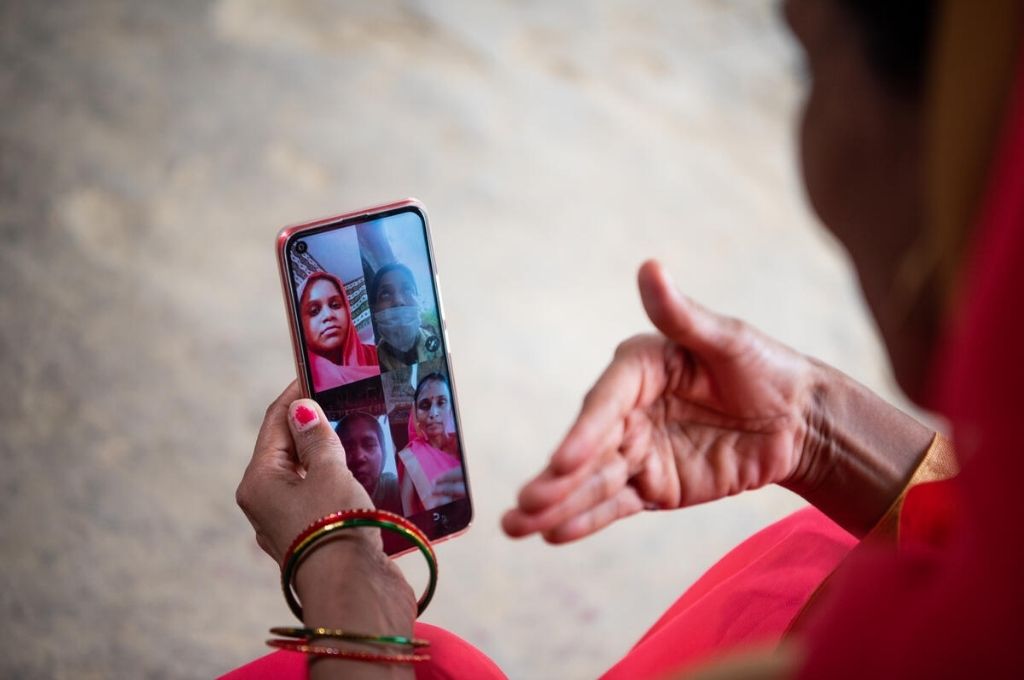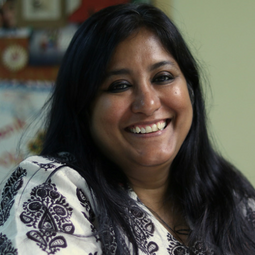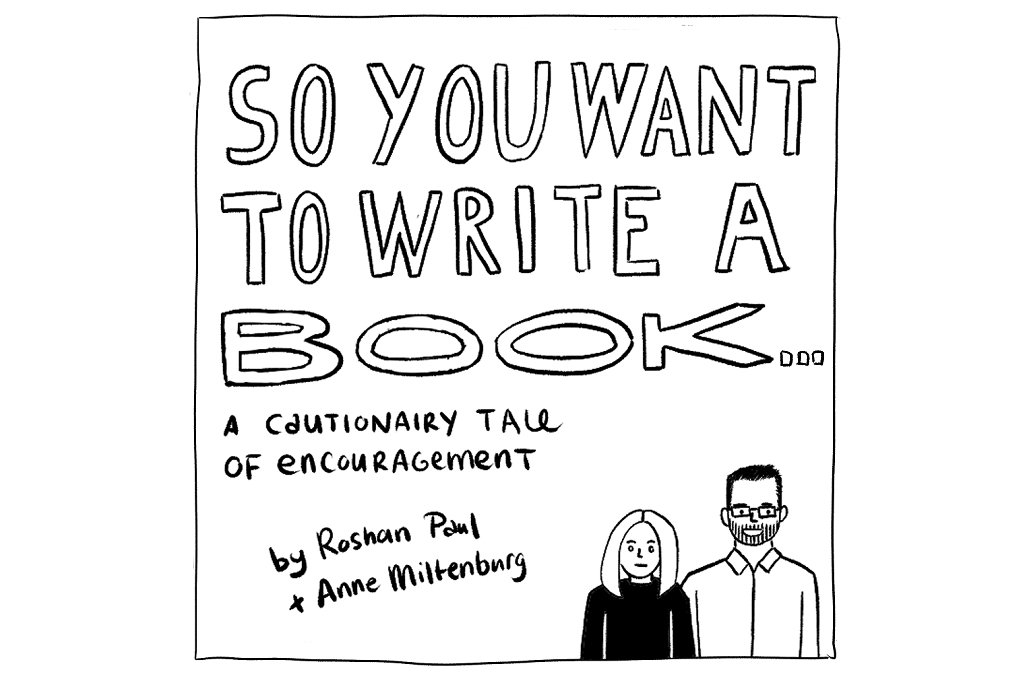In Benin, West Africa, M&C Saatchi (a communications agency) worked with Sightsavers (a nonprofit) to design social and behaviour change communications (SBCC) on COVID-19. The creative asset was a television commercial (TVC) that was to be pre-produced by M&C Saatchi in six local languages with subtitles. Other assets included radio, billboards, posters, flyers, and training guides for health workers as well as religious and traditional leaders. With inputs from Sightsavers on inclusive and accessible design recommendations, the TVC used a sign language interpreter and amplified words that were sung in a different colour. They also considered the position and size of the signer on the screen and the impact of the signer wearing a face mask, which can reduce the use of facial expression and mouthing. The result was that the design supported people who have hearing loss, are deaf, or have issues with working memory, processing speed, or dyslexia. The Ministry of Health representative took the position of supporting accessibility before official approval was granted for the TVC. “This more inclusive campaign has provided a great stake in the ground for how we should develop communications with inclusion in mind. This should form our starting point for future campaigns, in which we build on our previous work and look for ways to go further in delivering communications which are inclusive,” said the representatives from M&C Saatchi.
What has our response to COVID-19 taught us?
As a civil society organisation that does not work on service delivery, we at Breakthrough debated our community response to COVID-19 endlessly. The voices pouring out of black boxes on my Zoom screen were frustrated and angry. My colleagues said, “We are fighting several pandemics at various levels, as technology and social media has made misinformation fly at a rapid rate. This has made it difficult for us to get back the rapport we generally enjoy with the communities with whom we work. We are now being viewed with suspicion because we are talking about vaccines and treatments.”
Consequently, we decided that as we start building back, one of the areas of focus will be our communication on the pandemic, and how that communication can be context-specific and reflect the voices of the people we work with. This was based on an important lesson we learned during the last 18 months—in a crisis, if we forget to have consistent dialogue with the communities for whom we are designing services, and if we do not use targeted communication to talk about what’s relevant to them, they may partake in misinformation and fake news.

Did we really keep in mind that communication can effectively create social behavioural change?
There has been a huge response to the crisis from governments, civil society organisations, donors, political leaders, doctors, and scientists. And much of this has been about communication—protocols, treatment, and vaccines. There has been widespread information overload on every aspect of the pandemic. But were we strategic or inclusive enough in developing that communication? Did we really keep in mind that communication can effectively create social behavioural change?
Learning from the past
From past experiences, we have seen that community engagement and social change strategies built into communication have proved vital for everything from massive immunisation gains in the 1990s and 2000s, to Ebola, and meeting the polio challenge.
If you take the case of Ebola in West Africa, some of the most successful communication strategies were community engagement and targeted health communication to groups that were most at risk. At the beginning of the outbreak, the efforts at fighting misinformation and myths were not very strong, and so harmful solutions were peddled as the right ones. But later on, the use of ‘Ebola Hour’ on the radio to break myths and provide clear and correct health information proved to be very effective. Liberian advocacy groups posted audio announcements about Ebola in local native languages on Facebook to reach those who did not understand English and those who couldn’t read. International organisations worked with local anthropologists in Guinea to analyse the situation and improve cooperation with local communities. They found that the treatment of Ebola had so far focused on biomedical aspects alone and disregarded parameters such as community, society, and culture. Subsequently, they started to take the fears, concerns, and traditional beliefs of the local communities seriously. They found that locals were interpreting terms like ‘isolation centres’ as ‘death chambers’, from where no one was seen coming out alive. As a simple first measure, the anthropologists suggested changing the term to ‘treatment centres’. There was also a focus on a multi-modal strategy to effectively communicate prevention and management of the virus to affected communities.

It seems that these lessons from the Ebola outbreak hardly percolated through the global community when COVID-19 began. The ‘infodemic’, a new term I learned during this time, was diverse and varied. The huge influence of social media platforms amplified rumours and questionable information. Algorithms facilitated content promotion and the spread of information. This helped shape absurd narratives from the early days of the pandemic. Examples include misinformation connecting Bill Gates to the origin of the virus in a lab and rumours about vaccines causing impotence as the second wave and vaccine rollout hit India. Rumours and misinformation combined with fear even led to attacks on some health workers. Many organisations focused on breaking some of these myths and countering false information through social media posts and films, such as the countdown film by BBC Media Action.
What does our research tell us?
In late June 2021, we at Breakthrough undertook a dipstick research study to find out how COVID-19 is affecting women and girls indiscriminately in the areas where we work. We realised that concepts like post-vaccine symptoms are difficult to understand in rural, underprivileged communities as an onset of fever indicated illness, not a process of building antibodies to fight it. “Initially villagers were ready to get vaccinated, but then we heard that many people fell ill after their vaccination. So we thought if this is happening to so many, why should we take the vaccine at all?” said Ramsharan from a small village in Uttar Pradesh. The findings also showed that digital registration is resulting in fewer women taking the vaccine as they do not have access to devices, and that there is a clear hierarchy when it comes to sharing the workload at home—it is always the woman first. If she falls sick, older girls take over. Only if all the female members of the household are unwell do the men and boys get into action.

What can we do now?
As we start looking beyond the second wave and focus on building back, how can we improve communication on COVID-19? I spoke to some experts on this issue. Priyanka Dutt, executive director of BBC Media Action, said it is crucial to take a much more strategic, human-centred approach to developing communication. “Can we think about delivering evidence-based, engaging and impactful social and behaviour change communication on the pandemic?” she asked.
Sanjeeta Agnihotri, deputy director of the Center for Communication and Change – India (CCC-I), said that it is crucial to share a unified, accurate and credible message. “It is (also) important to tailor these messages according to the different audiences,” she added.
SBCC preparedness efforts are an integral part of strengthening a health system and can bolster its ability to respond to an emergency public health crisis.
As Priyanka says, we must go beyond simple information and start looking at communication from the point of view of people—who are complex and have varied and layered needs, which have been impacted by COVID-19. SBCC preparedness efforts are an integral part of strengthening a health system and can bolster its ability to respond to an emergency public health crisis. Creating such communication signifies a need to identify different stakeholders, understand their roles, and quickly engage them together to solve a problem—for example, bringing local influencers in to talk about the need for vaccines. SBCC also ensures that structures and networks are established among various stakeholders, resulting in successful coordination efforts between policymakers and nonprofits, distributors of medical supplies, and community health workers. These and other initiatives can contribute to an overall transformation of health systems, allowing them to function well and respond to emergencies when necessary.
We must focus on understanding people’s attitudes towards adopting COVID-19-appropriate behaviour, including taking vaccines. We should also do more collectively to equip people in tackling misinformation, including learning how to tell fact from fiction and pausing to check the veracity of data before sharing it with friends and family.
Do communities feel they have the individual and collective skills and ability to adopt COVID-19-appropriate behaviours? Both Sanjeeta and Priyanka talked about tailoring communication to meet the specific needs of marginalised communities. Each individual has a unique lens to view the world. It is critical for communicators to wear that lens and understand the audiences’ needs, perceptions, and self-efficacy. Sanjeeta also spoke about how our interventions can be modified to address where people are in their behaviour change level: Are they close to acknowledging the benefits of change? Have they taken an action that shows they are ready for it? Or are they relapsing to the maskless days of pre-pandemic liberation?
We also need to figure out how communication can play a role in the many intersectional issues emerging from the pandemic.
My colleagues at Breakthrough believe that COVID-19 communication cannot come purely from a public health lens. Don’t we have enough evidence on the intersectionality of the problem—from women and girls suffering disproportionately across the world to minorities and migrants facing higher risks of contagion than white upper and middle classes in the USA? Any which way you look at it, communication is effective when it is tailored to the audience you aim to reach.
There is an enormous amount of work to be done in strategic SBCC that can inform, empower, and connect communities. It must be designed in collaboration with communities and delivered in partnership with public and private sector organisations. We also need to figure out how communication can play a role in the many intersectional issues emerging from the pandemic—the escalation in gender-based violence, mental health concerns, and more. We cannot have a one-size-fits-all communication strategy. We need our ‘Corona Hour’ on radio.
Breakthrough is a member of the Global Alliance for Social and Behaviour Change.
—
Know more
- Explore the ‘COVID-19 Communication Network’, an online repository of communication materials from around the world, vetted by SBCC experts.
- Watch these public service ads that break myths surrounding COVID-19 vaccines.
- Learn more about SBCC and COVID-19.
Do more
- Write to southasia@sbccsummit.org to participate in the virtual South Asia SBCC conversation that will be held from 7–9 December, 2021.




